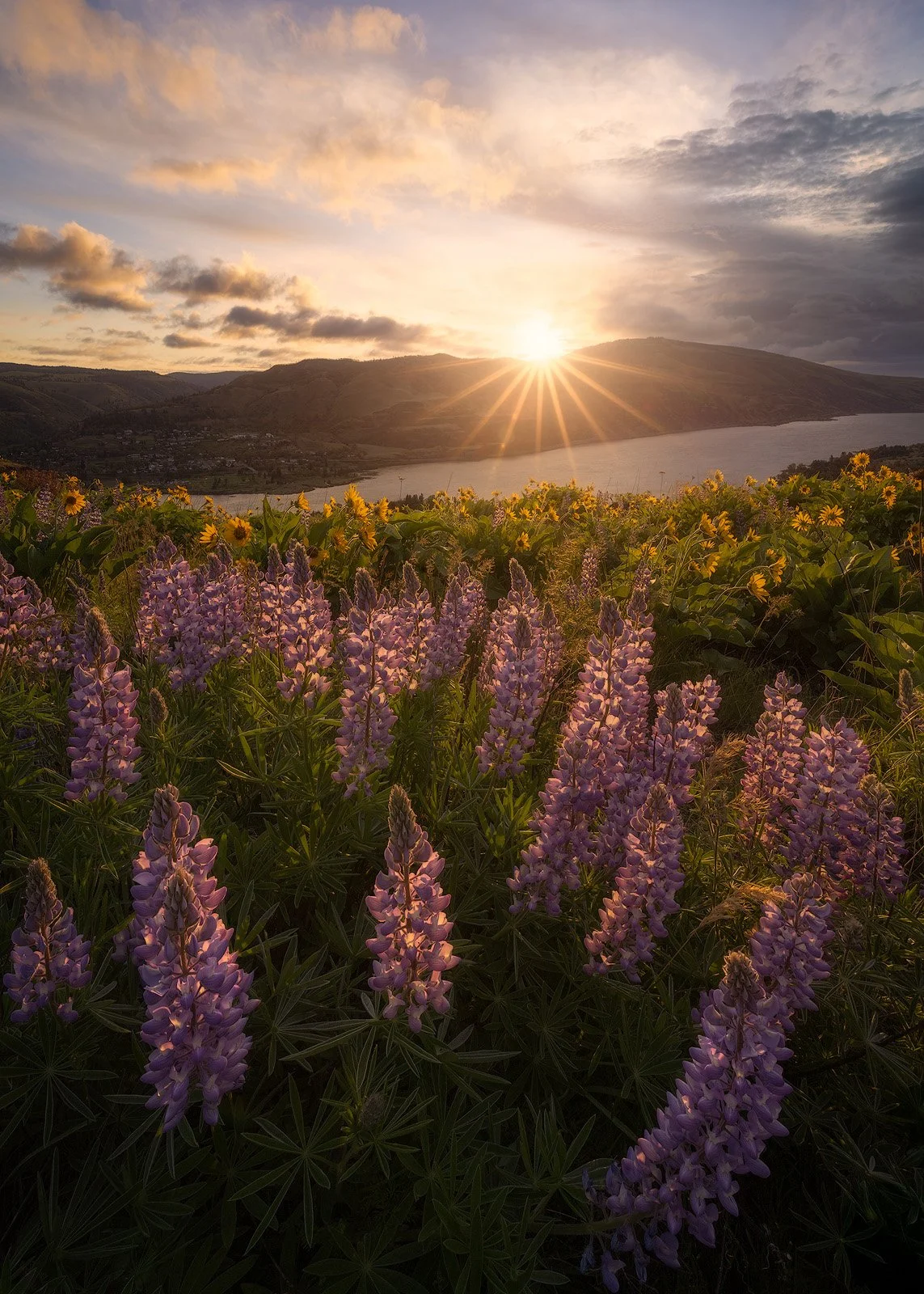 Image 1 of 1
Image 1 of 1


Lupine Dawn
As the first light of morning breaks across the Columbia River Gorge, the Rowena Plateau stirs with color. Golden sunlight spills over the hills, igniting the slopes in tones of amber and green. In the meadows below, a tapestry of purple lupine and yellow balsamroot turns toward the dawn, each petal trembling with dew. The air is cool and sweet, alive with the faint hum of bees and the scent of earth warming beneath the sun. Across the valley, the Columbia River winds through shadow and light, its surface catching the sky’s reflection in long ribbons of silver.
The moment feels suspended between calm and awakening. A soft breeze moves through the grasses, rippling color across the plateau like a painter’s brush. Clouds drift low above the ridgeline, their edges glowing pink and gold, while the far hills fade into blue haze. Every sound seems softened — the rustle of leaves, the whisper of water far below, the distant cry of a hawk echoing through the canyon. The land holds the kind of silence that hums with life.
As the sun climbs higher, the scene shifts: light deepens, shadows retreat, and the flowers turn brighter, bolder, as though aware of their brief season. It’s a morning built on impermanence — one that exists only until the wind changes, until the next cloud drifts across the sun.
Lupine Dawn captures the Gorge at its most tender — a meeting of earth and light, fleeting yet complete. It is a hymn to renewal in the Pacific Northwest, where wildflowers bloom and fade in harmony with the turning river and the rhythm of the day’s first light.
As the first light of morning breaks across the Columbia River Gorge, the Rowena Plateau stirs with color. Golden sunlight spills over the hills, igniting the slopes in tones of amber and green. In the meadows below, a tapestry of purple lupine and yellow balsamroot turns toward the dawn, each petal trembling with dew. The air is cool and sweet, alive with the faint hum of bees and the scent of earth warming beneath the sun. Across the valley, the Columbia River winds through shadow and light, its surface catching the sky’s reflection in long ribbons of silver.
The moment feels suspended between calm and awakening. A soft breeze moves through the grasses, rippling color across the plateau like a painter’s brush. Clouds drift low above the ridgeline, their edges glowing pink and gold, while the far hills fade into blue haze. Every sound seems softened — the rustle of leaves, the whisper of water far below, the distant cry of a hawk echoing through the canyon. The land holds the kind of silence that hums with life.
As the sun climbs higher, the scene shifts: light deepens, shadows retreat, and the flowers turn brighter, bolder, as though aware of their brief season. It’s a morning built on impermanence — one that exists only until the wind changes, until the next cloud drifts across the sun.
Lupine Dawn captures the Gorge at its most tender — a meeting of earth and light, fleeting yet complete. It is a hymn to renewal in the Pacific Northwest, where wildflowers bloom and fade in harmony with the turning river and the rhythm of the day’s first light.
